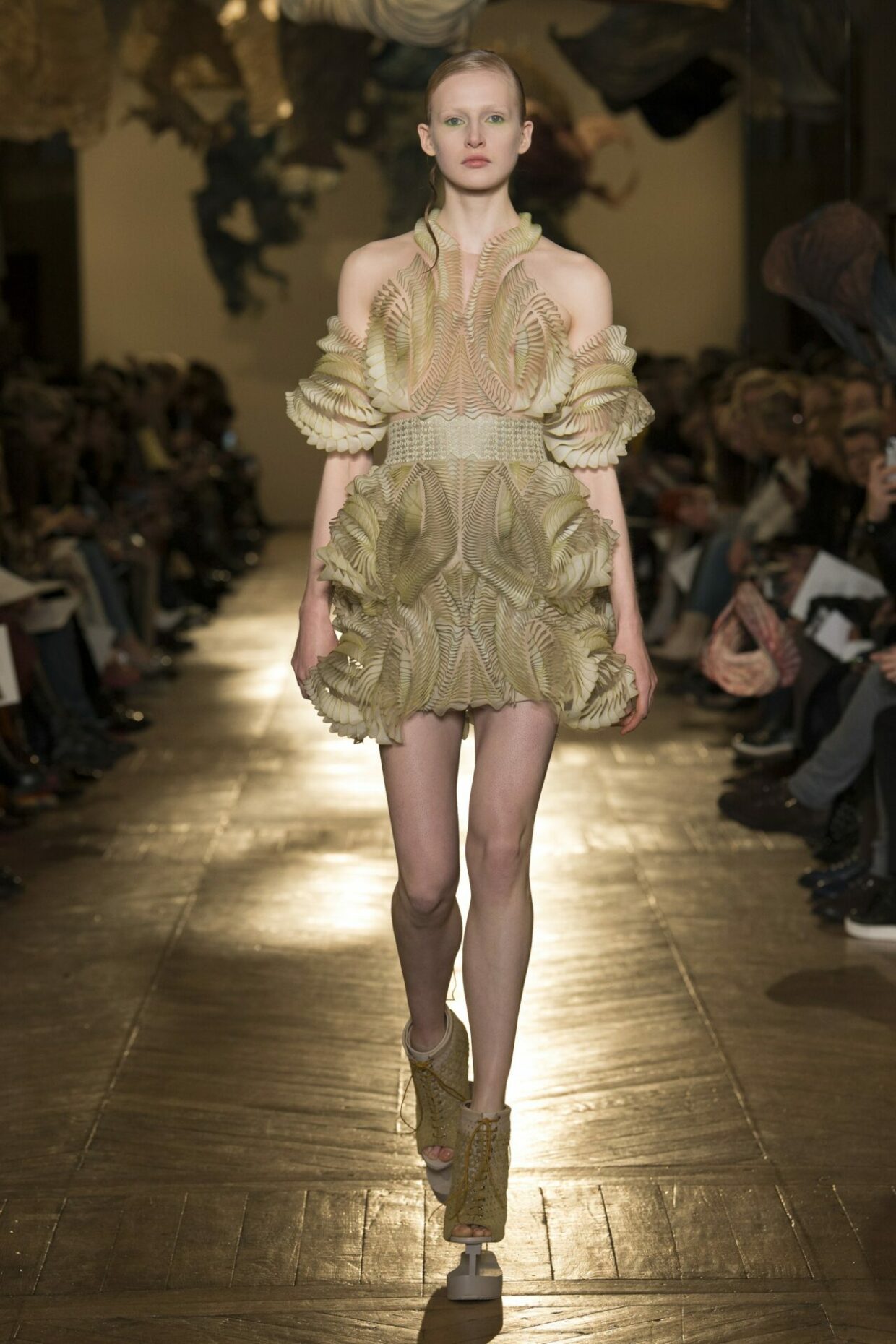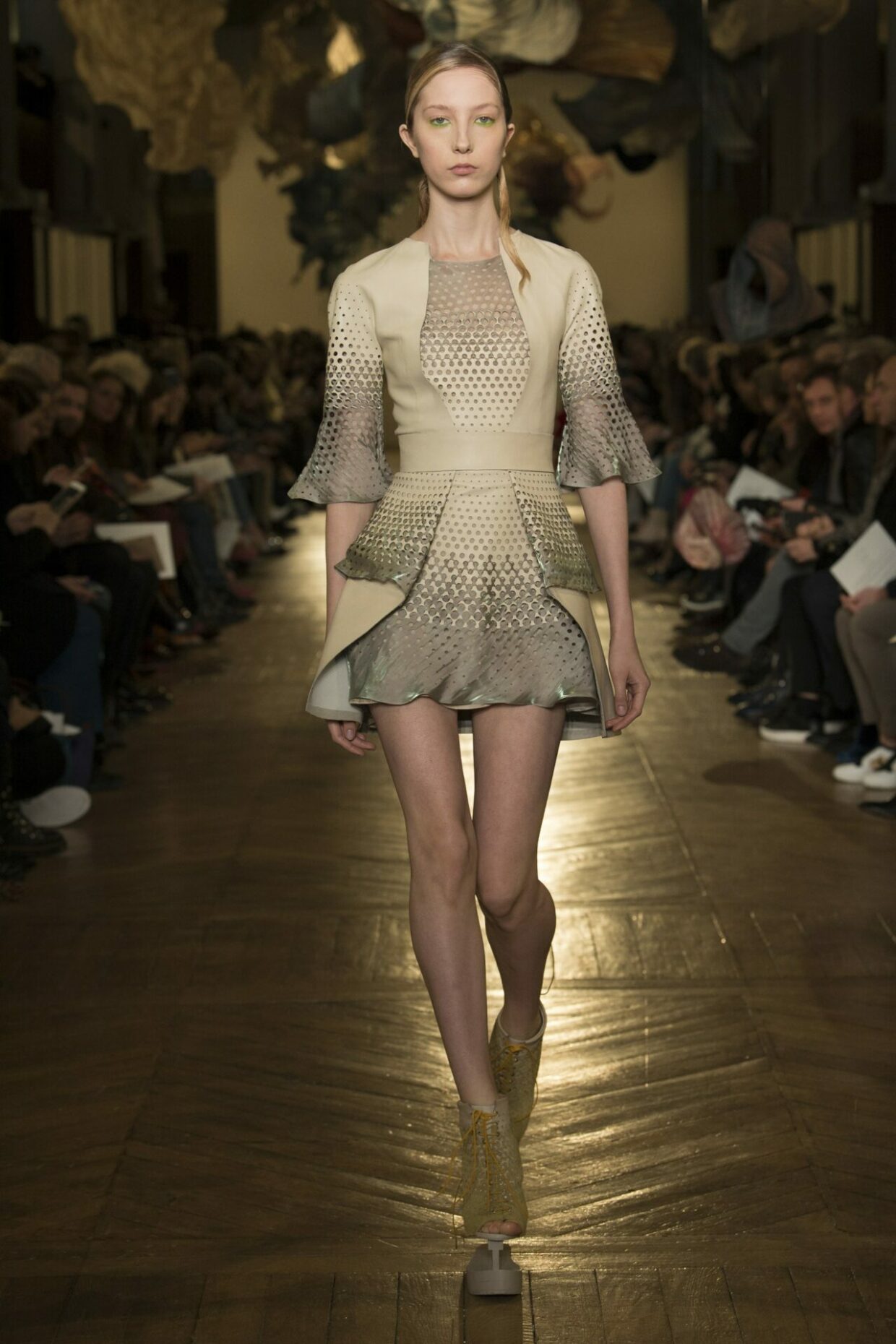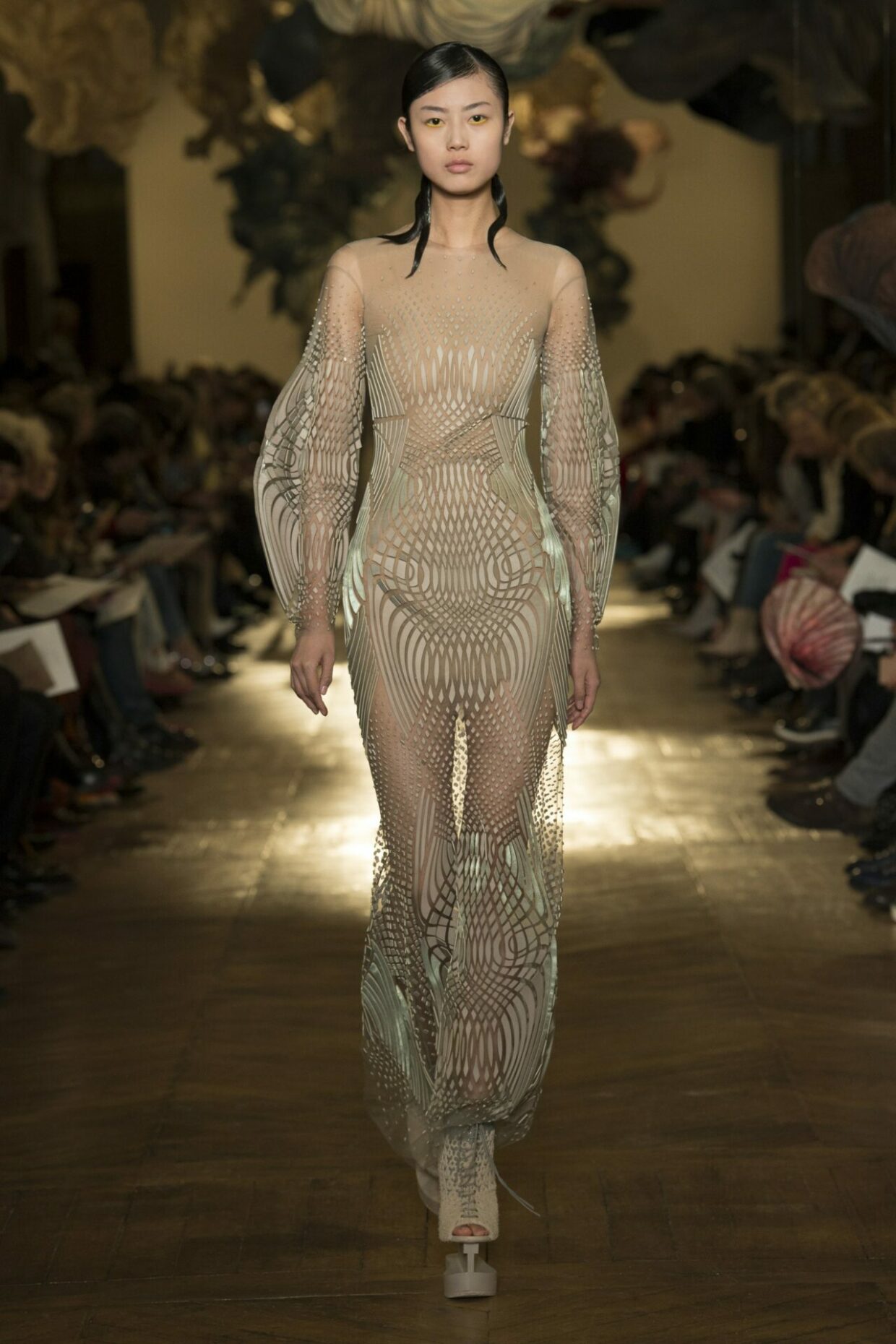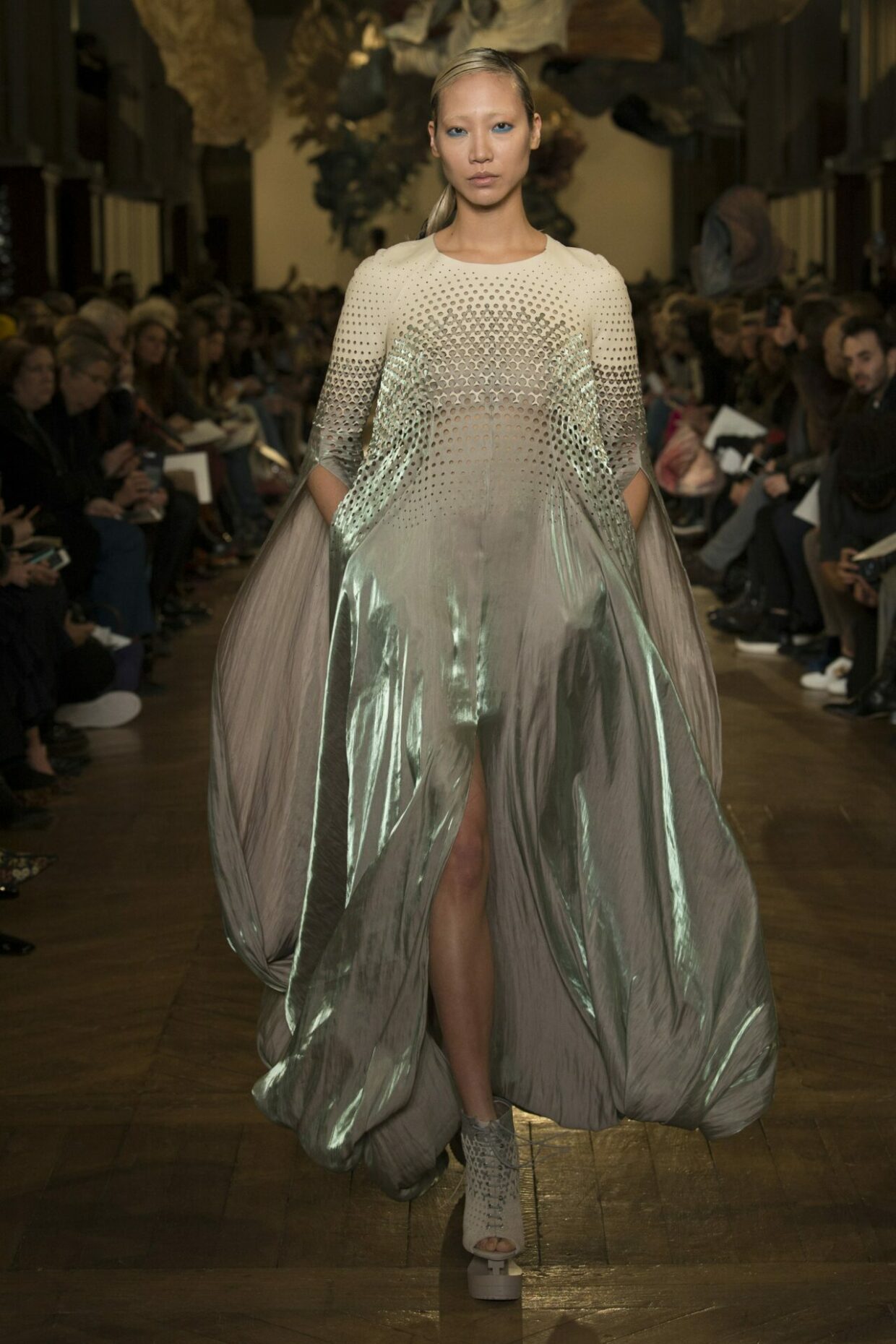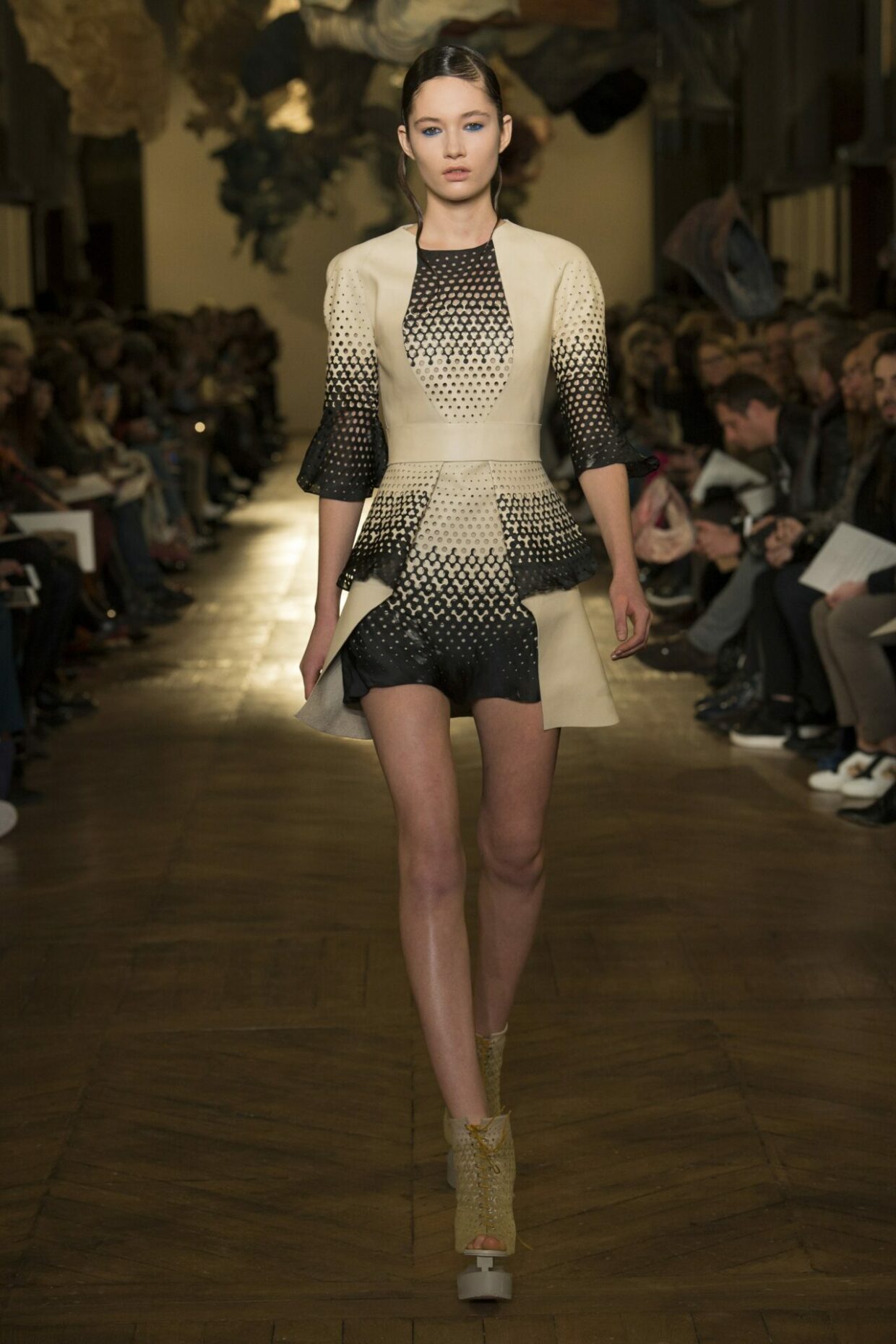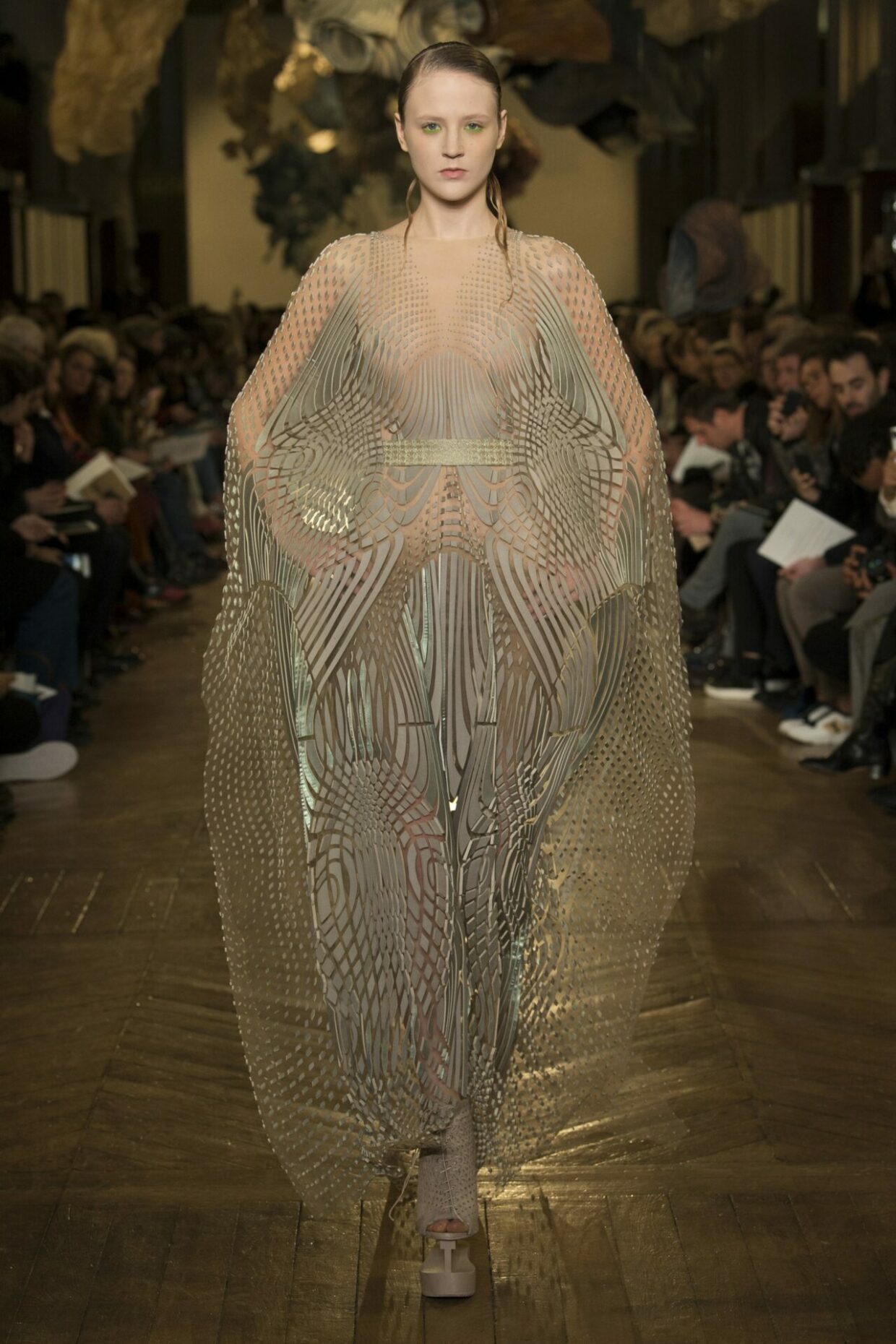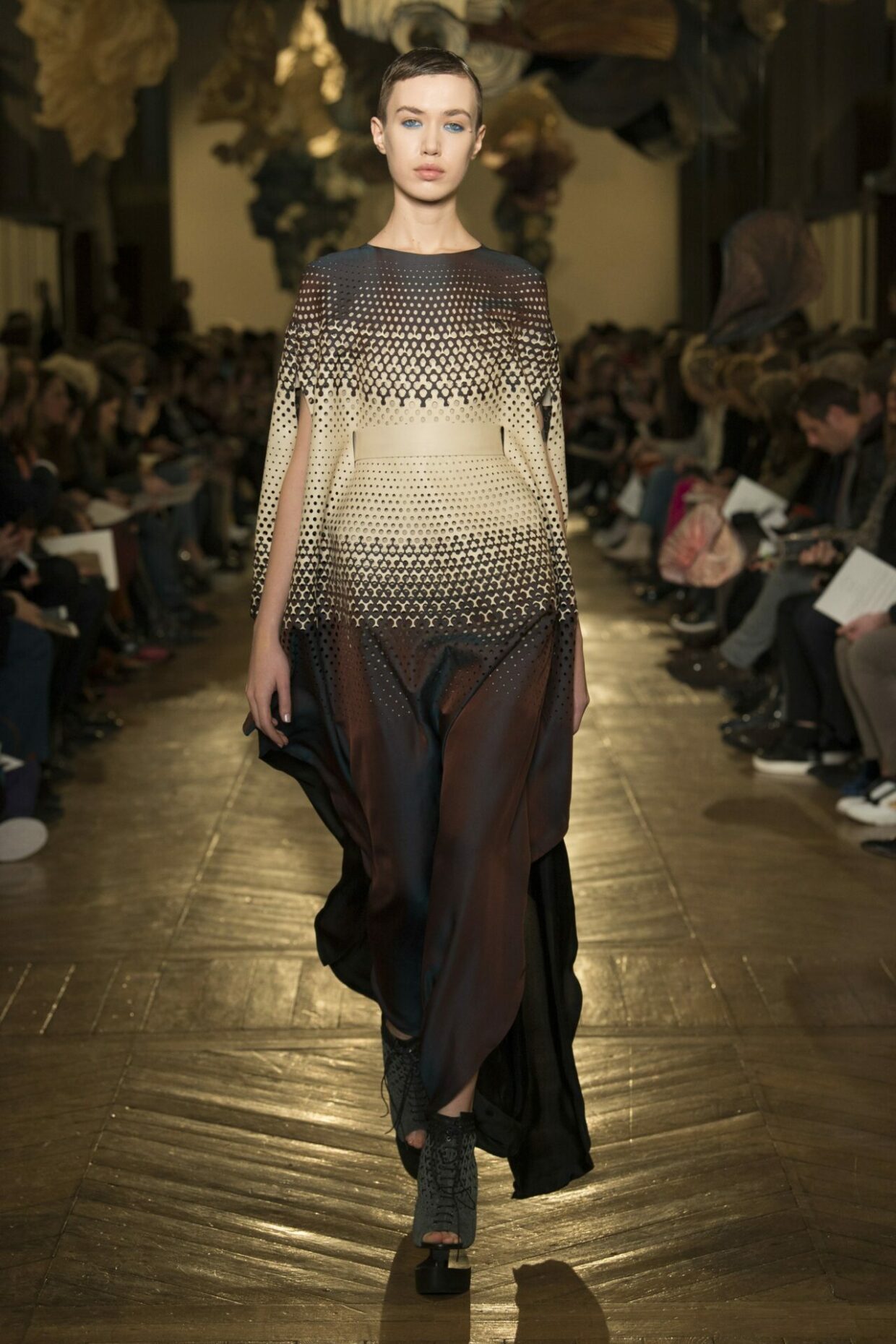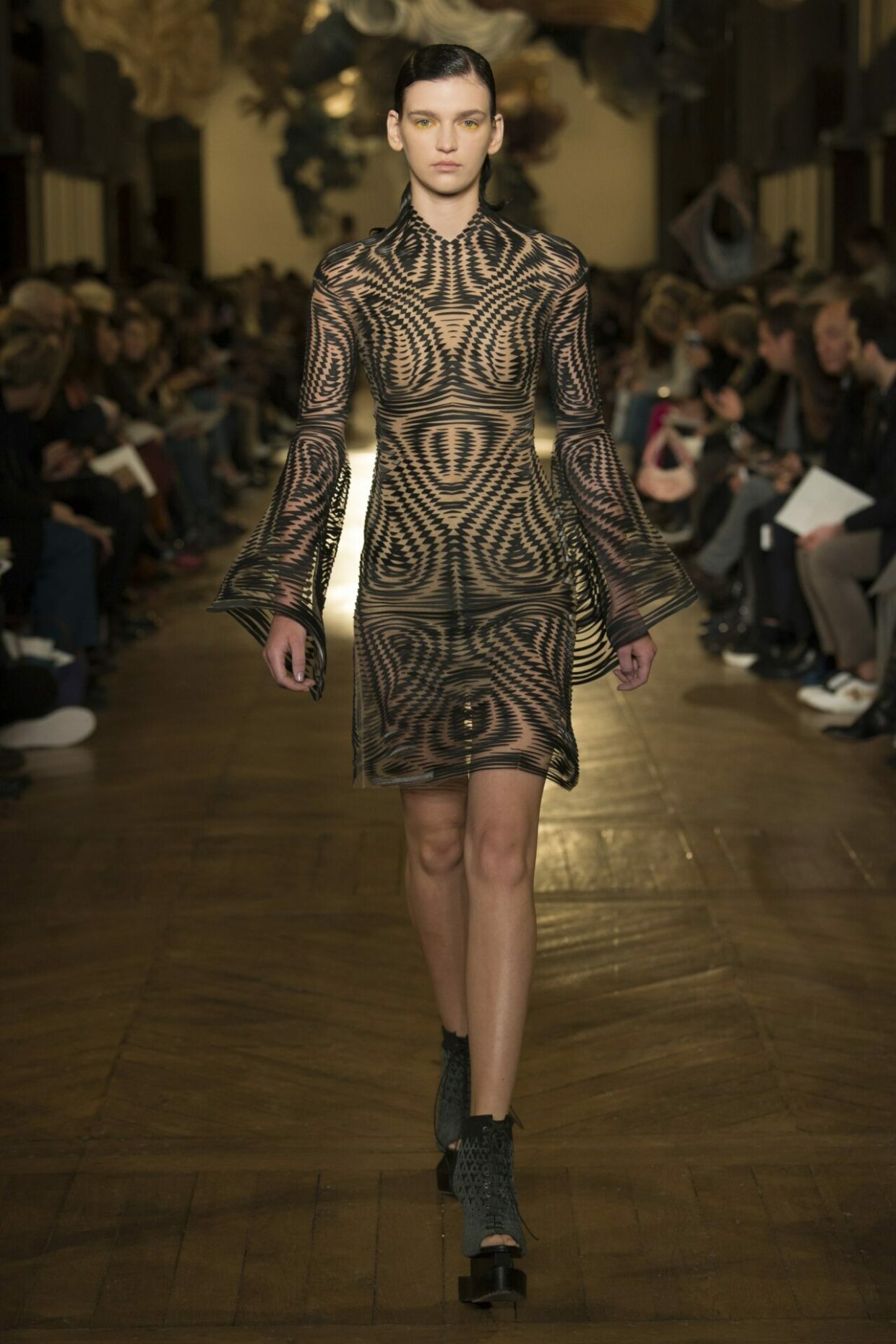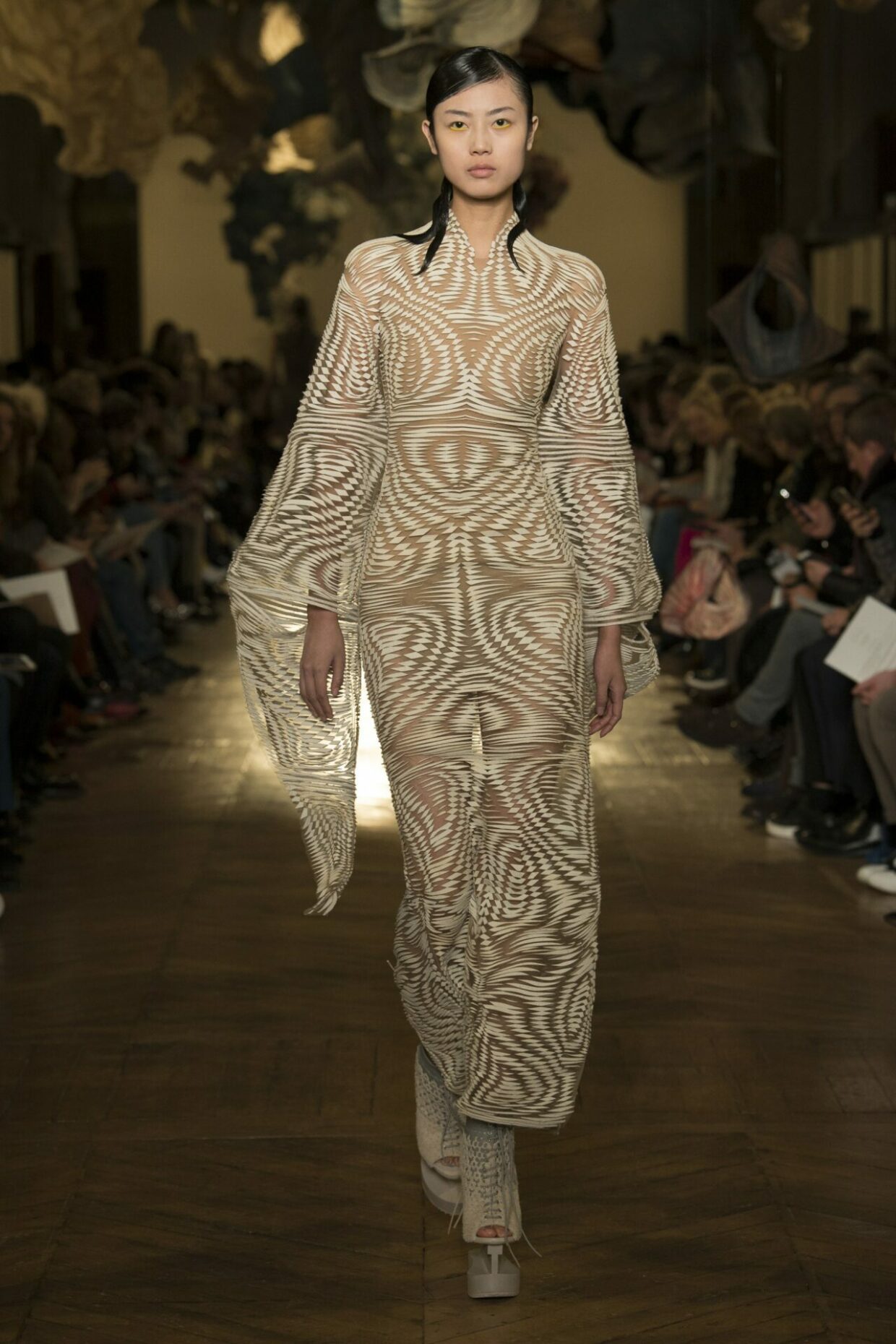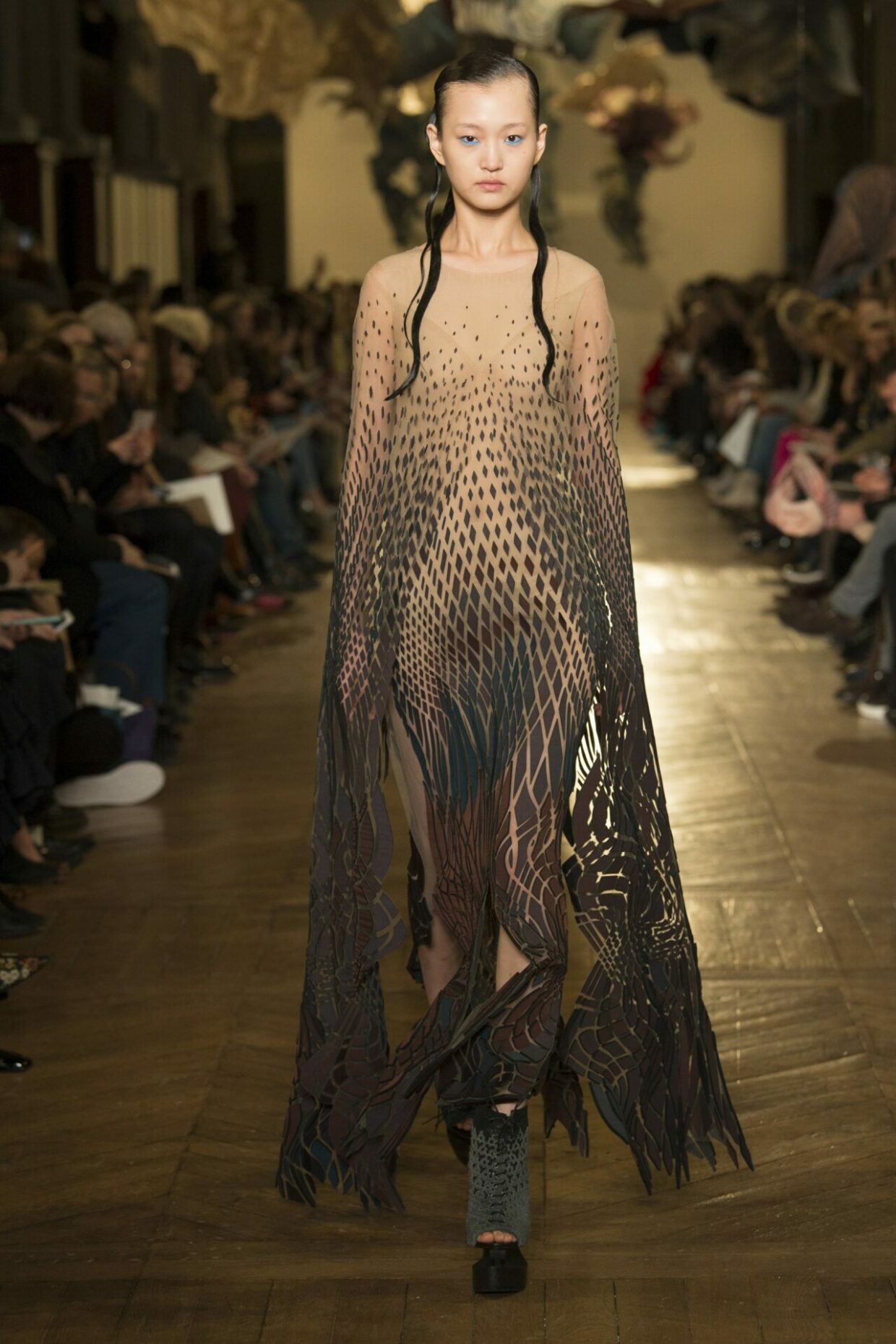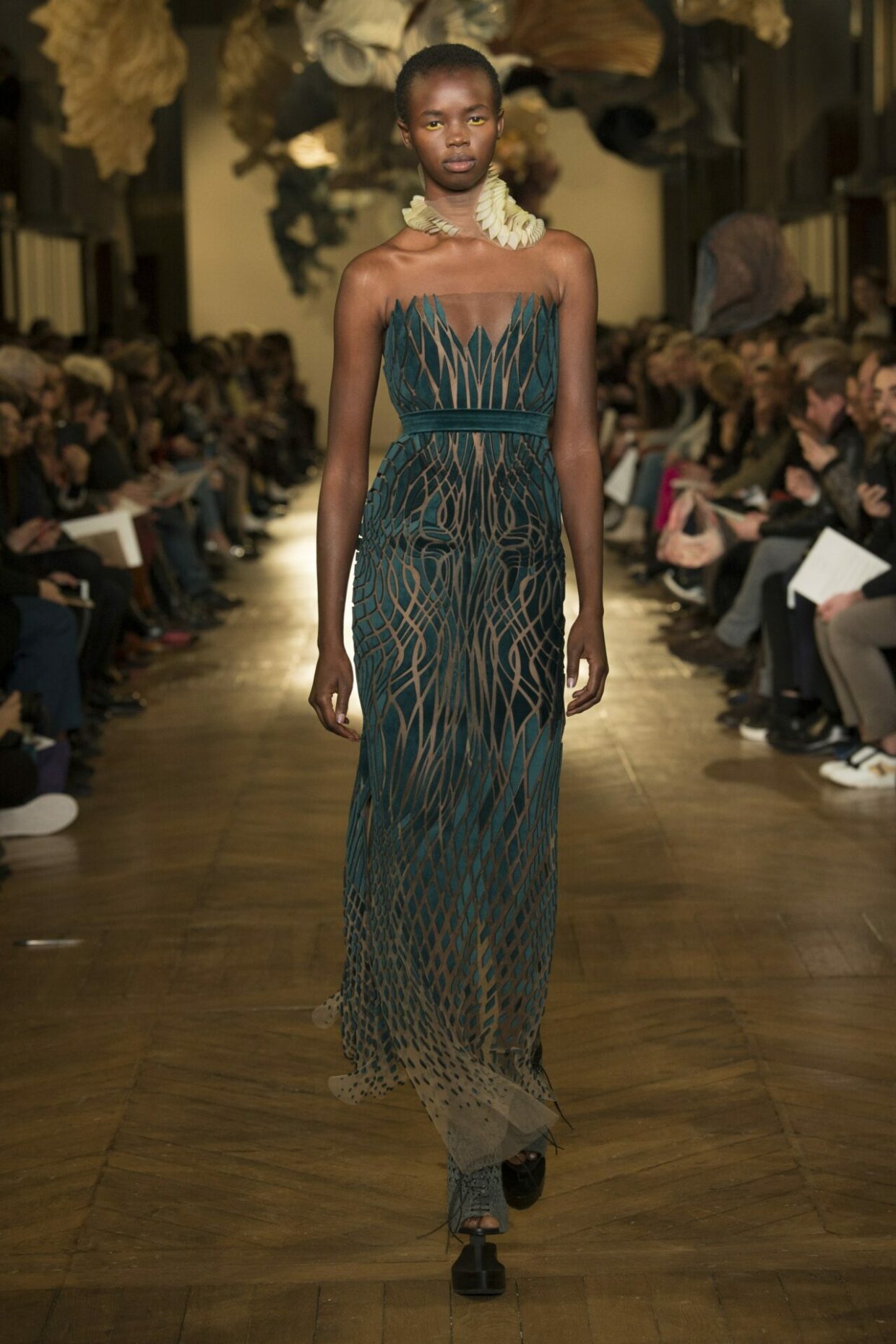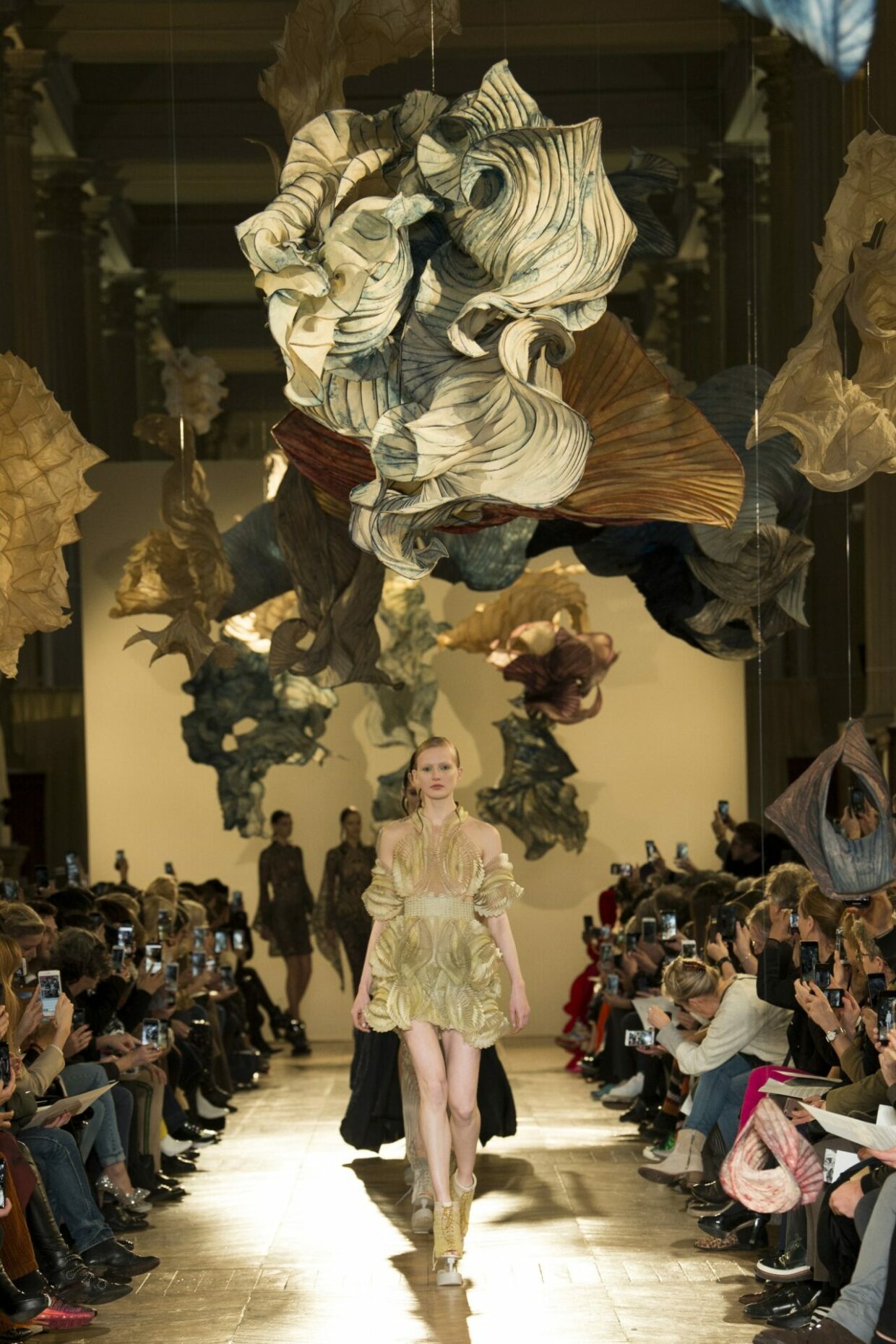Iris van Herpen Spring 2018 Couture
Jan. 25, 2018
by AMY VERNER
Stepping inside the Galerie de Minérologie et de Géologie makes you consider the human impulse to go deeper—in the obvious sense, but also regarding ideas that might normally seem beyond reach. This is Iris van Herpen’s natural state; she remains the sublimely cerebral outlier on the haute couture schedule. To see her latest creations advance down the classical, wood-paneled hall put her innovation into perspective—from prehistoric crystals to what she referred to as “data dust.”
Van Herpen titled the collection “Ludi Nature,” with the first word a cognate of “play” in Latin and the second representing her key inspiration. She is a prodigious replicator of nature, using processes that defy fashion. An observational interpretation of the first dress would make note of its quivering scales, undulating shapes, and exceptional lightness. Its technical specs outlined foam-lifting and laser-cutting of a parametric pattern heat-bonded onto invisible tulle. The dresses with perforated patterning consisted of nude leather and liquid fabric bonded to Mylar as an interlocking gradient. The structural shift from molded to fluid was remarkably seamless, as though the border between yin and yang had been punctured and dissolved. Her 3-D printed illusion fabric innovations—see the series midway through—have become so precise that you feel she is resurfacing the topography of the human body. Tattoo dreams are made of these.
Adding up the application of contoured foliage, funneling forms, velvet fins, and tonal luster, the impression was of an otherworldly Venus who walks in shoes elevated from their soles. But does all this engineering qualify as unnatural? “Don’t forget how engineered nature is, itself,” Van Herpen counters. “I think we as humans don’t even come close to the intelligence within nature. It’s funny how people think that nature is simple and technology is complex—it’s the opposite; technology is simple and nature is complex.”
Accordingly, just when you think that no other designer has mastered 3-D printing like she has, you realize the impossible benchmark she has set for herself. Which is why, in the presence of Marina Abramovic and amid a suspended scene of irregular blooms sculpted in cellulose by Dutch sculptor Peter Gentenaar, her collection was graceful. By now, her process is what defines her apart from aesthetic comparisons to Alexander McQueen. In this moment where designers talk of projecting the inner strength of women, it becomes even more interesting that Van Herpen’s ideal does its best to personify the force of nature.
Source: VOGUE
